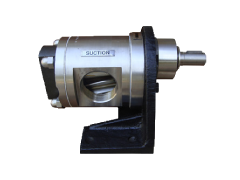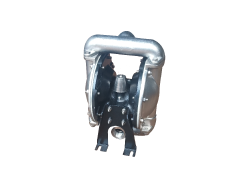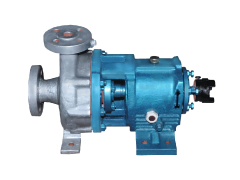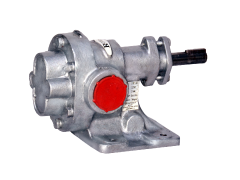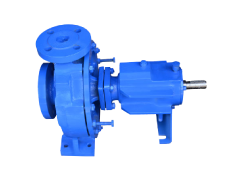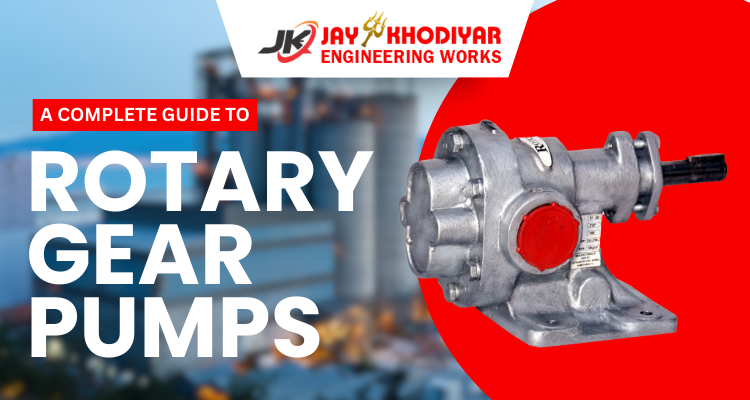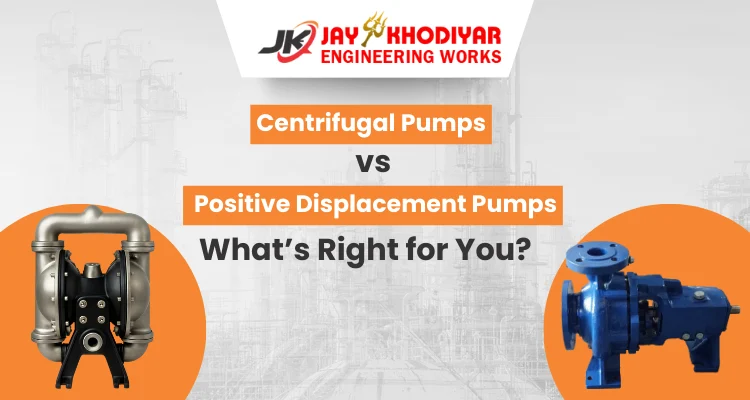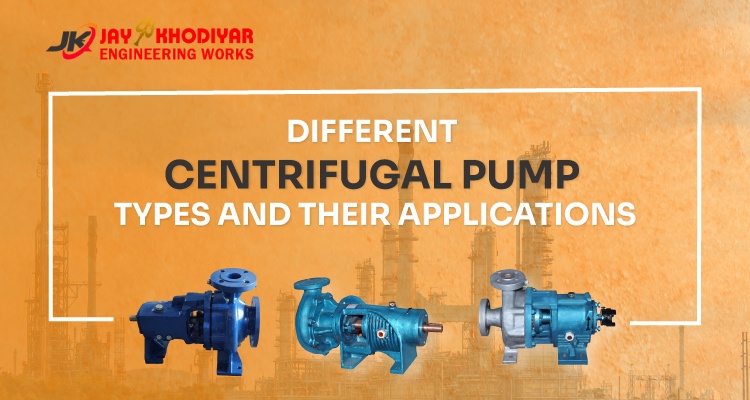
Different Centrifugal Pump Types and Their Applications
November 22, 2023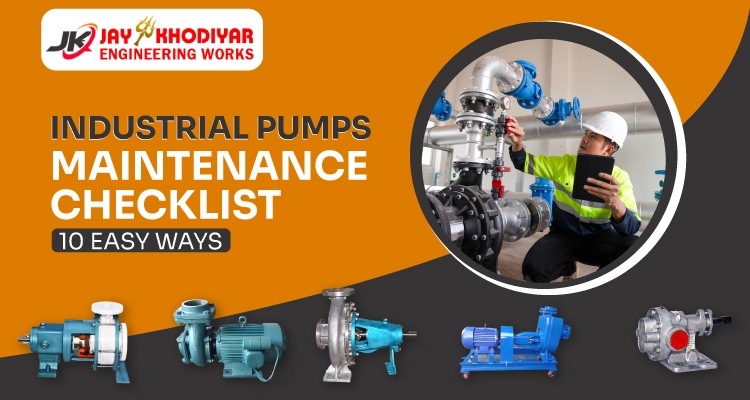
Industrial Pumps Maintenance Checklist: 10 Easy Ways
December 15, 2023Introduction
Centrifugal pumps are one of the most used industrial pumps for transporting fluids smoothly and efficiently.
These pumps are proven to be highly reliable in various industrial, domestic, and agricultural applications due to their versatility, simplicity, and efficiency.
However, understanding the working mechanism of centrifugal pumps before installation is essential for successful fluid transportation.
In this blog, we will explore the centrifugal pump working process, key components, types, advantages, and applications.
What Is A Centrifugal Pump?
A centrifugal pump is a mechanical device designed to transport fluids by converting mechanical energy from the motor into kinetic energy in the fluid.
To put it simply, a rotating impeller is used to create centrifugal force to move the fluid through the centrifugal pump and direct it toward the discharge pipe.
Centrifugal Pump Working Principle
The working mechanism of a centrifugal pump is based on the transfer of mechanical energy generated from the motor to the liquid being pumped..
The centrifugal pump consists of three main components, including an impeller, a casing, and a volute. The impeller is a rotating component containing curved blades to impart kinetic energy to the fluid.
The casing is a stationary component around the impeller, which directs the liquid toward the pump outlet.
As the liquid moves through the casing, it gains momentum and pressure. Here, the pump volute maintains the velocity of the fluid as it approaches the discharge pipe.
Finally, the fluids get discharged through the discharge pipe.
How Does A Centrifugal Pump Works?
Now that we have understood the centrifugal pump principle of operation, let’s understand how centrifugal pumps work. Following the step-by-step process will help you understand the centrifugal pump working process clearly.
1. Priming:
Before the pump can start working, it needs to be primed. Priming refers to the process of filling the pump casing and suction pipe with fluid to ensure there are no air bubbles and to create a continuous flow.
2. Rotation:
After priming the centrifugal pump, the motor starts rotating the impeller, which pushes the fluid toward the discharge port, creating a low-pressure region at the center.
3. Suction:
As the rotation speed of the impeller increases, it establishes the normal pressure required to begin pumping. Strong suction is created for proper suction of the liquid and draws liquid into the pump through the suction pipe.
4. Centrifugal Force:
As the fluid enters, it gains kinetic energy due to the centrifugal force created by the rotating impeller. This kinetic energy increases the fluid's velocity.
5. Conversion:
The high-velocity fluid enters the volute, which converts the kinetic energy into pressure energy and increases the fluid's pressure.
6. Discharge:
The high-pressure fluid is then discharged from the pump through the discharge pipe.
Elements That Affect Centrifugal Pump Working Process
▶️ Pull Pressure:
If the pump pressure is not as per the need, it might lead to cavitation, which can cause harm to the pump and impeller.
▶️ Stream At Pull:
The constant progression of fluid is needed in centrifugal pumps. If the pump runs dry, it can cause damage to internal pump components.
▶️ Liquid Consistency:
Centrifugal pumps are ideal for solvents, organics, oils, acids, bases, and any thin liquids. However, if you plan to pump highly thick liquids, it might not work as efficiently as it does.
▶️ High Pressure Fluids:
Liquids that require high pressure to move are not appropriate for centrifugal pumps. The pump doesn’t have the ability to generate high pressure; hence, if pumping high-pressure fluids, make sure to have sufficient pressure factors.
▶️ High Flow Rate:
Centrifugal pump is sensitive to viscous fluids, high temperature, and high flow rate; all these can affect the pump performance and may cause cavitation and damage to the impeller.
Types Of Centrifugal Pumps
There are several types of centrifugal pumps , each designed for specific applications. The most common types include:
1️⃣ Single-Stage Centrifugal Pump:
- Has only one impeller
- Suitable for low-pressure applications
2️⃣ Multi-Stage Centrifugal Pump:
- Have multiple impellers
- Ideal for higher-pressure applications
3️⃣ Vertical Centrifugal Pump:
- Have a vertical design
- Best for applications with limited space
4️⃣ Submersible Centrifugal Pump:
- Design to be submerged in the fluid
- Ideal for wastewater treatment plants and deep wells
5️⃣ Semi-Open Centrifugal Pump:
- Have semi-open impellers
- Suitable for handling liquids with low viscosity
6️⃣ Closed Impeller Centrifugal Pump:
- Have closed impellers
- Best suited for handling volatile and explosive fluids
Advantages of Centrifugal Pumps
Some of the key advantages of centrifugal pump include:
✅ High Efficiency:
Can transfer a large amount of fluid with minimal energy consumption.
✅ Simple Design:
Have a relatively simple design, making them easy to operate and maintain.
✅ Reduce Failure:
Have fewer moving parts, which reduces the risk of mechanical failure and avoids frequent maintenance.
✅ No Leakage:
These pumps are less likely to leak; hence, there are no leakage problems.
✅ Fluids Handling Capacity:
Have solid fluid handling capacity and are capable of pumping both hazardous and sensitive fluids.
✅ Wide Range Of Applications:
Can handle a wide range of fluids, including liquids with viscosity and solids in suspension. This makes them suitable for various industries, such as chemical processing, water treatment, and oil and gas.
Applications Of Centrifugal Pumps
- Water Supply And Distribution
- HVAC Systems
- Chemical Processing
- Oil And Gas Industry
- Fire Protection Systems
- Sewage/Slurry Disposal
- Food And Beverage Manufacturing
- Irrigation Systems
- Water Treatment Plants
- Paper Mills
- Power Plants
- Mining Applications
- Military Applications
- Shipbuilding Industry
To Summarize
Centrifugal pump operates by converting mechanical energy into kinetic energy, increasing the fluid’s velocity and pressure to guide it towards the pump discharge point.
The simple design, high efficiency, low maintenance, and versatility of the centrifugal pump make it a popular choice in various industries for pumping liquids.
If you are looking for a centrifugal pump for your applications, you are guaranteed to find the best fit for your application at Jay Khodiyar Engineering Works.
Being a leading manufacturer of centrifugal pumps in India, we have an extensive product range of centrifugal pumps for a wide range of industrial applications.
Contact us today for a quote, or learn more about our centrifugal pumps here.







